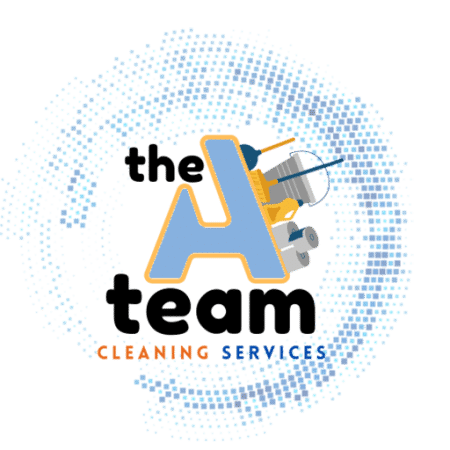Ensuring the safety of our children in every aspect of their lives is a top priority, and that includes creating a clean home environment where they can play and grow without risks. Using the right cleaning strategies is crucial, especially in households where young children spend a lot of time in contact with surfaces and toys that could harbor harmful germs or chemical residues. We, as professional cleaners, are acutely aware of these dangers and emphasize the importance of using child-safe cleaning products and methods.
Child safety doesn’t end at childproof locks and corner guards; it extends to the very products and techniques used for daily cleaning. It’s important to select cleaning agents that are free from toxic chemicals without sacrificing their effectiveness. Equally vital is applying these products in a way that limits any potential exposure to young children, ensuring that their living spaces remain pristine and perfectly safe.
In the subsequent sections, we’ll guide you through selecting the safest cleaning products, share the best techniques for sanitizing children’s toys and play areas, help you craft a child-friendly cleaning schedule, and offer tips to maintain a consistently safe environment for your children at home.
Understanding Child-Safe Cleaning Products
When it comes to cleaning a home with children, the safety of the products we use is paramount. A child-safe cleaning product should be potent enough to effectively clean, yet gentle enough not to pose any health risks if young ones come into contact with recently cleaned surfaces.
These products are typically free from harmful chemicals like ammonia, chlorine, and phthalates—substances that can cause respiratory irritation or worse when inhaled or touched by little ones. We make it a point to select cleaners that are certified non-toxic and biodegradable to ensure they break down naturally without leaving harmful residues.
Moreover, understanding the labeling of cleaning products is crucial. Labels that mention “non-toxic,” “biodegradable,” or “all-natural” are preferable for spaces shared with children. However, it’s also important to read beyond the marketing terms and check for any certification like the Environmental Protection Agency’s Safer Choice label, which indicates the product’s safety for human health and the environment. This way, we provide a cleaning solution that maintains high standards of cleanliness while keeping your little ones safe.
Techniques for Effective and Safe Toy Cleaning
Tools are constant companions for children and therefore require regular cleaning to prevent the buildup of bacteria and germs. Plastic toys are often the easiest to clean using a gentle, yet effective solution of warm water and mild soap. For toys that can withstand moisture, we advocate for periodic soaking in a safe cleaning solution, followed by thorough rinsing with clean water to ensure that no cleaning residue remains.
Plush toys, on the other hand, pose a different challenge and are best cleaned by vacuuming and spot cleaning with a mild detergent, or they can often be machine washed using a gentle cycle.
For electronic toys that cannot be soaked or subjected to significant moisture, wiping with a microfiber cloth lightly dampened with a suitable diluted cleaning solution is effective. It is always a good practice to ensure toys are completely dry before being handed back to children to play with. This not only ensures safety but maintains the durability of the toys. We also encourage regular checks on toy cleanliness and organizing them periodically, which further supports a hygienic play environment for children.
Creating a Child-Friendly Cleaning Schedule
Creating a cleaning schedule that aligns with the presence and activities of children in the home is vital. It’s all about timing and the choice of products; we focus on cleaning times when children are less likely to be in the room, such as during school hours or nap times. This practice helps ensure that the living space is ventilated and any product used has settled or dried up before the children return. It’s also beneficial to integrate daily, light cleaning tasks that decrease the need for using stronger products frequently.
Moreover, involving older children in the cleaning process can be educational and helps instill the value of a clean environment. We recommend simple tasks such as putting toys away, which can be incorporated into their daily routines.
For weekly cleanings, deeper tasks that involve child-safe products can take place, ensuring that every part of your home remains consistently clean and safe. This balanced approach allows the cleaning process to be thorough yet safe, accommodating the well-being and curiosity of growing children.
Top Tips for Maintaining a Child-Safe Home Environment
Here are some tips for maintaining a child-safe home environment. First, regular checks for spills or areas that might collect dust or mold are essential because these can quickly become breeding grounds for bacteria that are harmful to children. Immediate cleaning using safe products ensures these problems can be managed before they escalate.
Another tip is to keep all cleaning products, even if they are child-safe, stored out of reach of children. Safety locks on cabinets where these products are stored can provide an additional layer of security. Furthermore, maintaining cleanliness around eating areas and where children play and sleep not only contributes to physical health but also to overall wellness and comfort.
As we draw this discussion to a close, remember that keeping your home clean and safe for children doesn’t have to be overwhelming. At The A Team Cleaning Services, we specialize in creating clean environments that guard the health and safety of every family member—especially the little ones. If you’re looking for professional recurring cleaning services in Fremont, CA that value thoroughness and safety, give us a call today and see how we can help you achieve the peace of mind that comes with a spotless, child-safe home.
